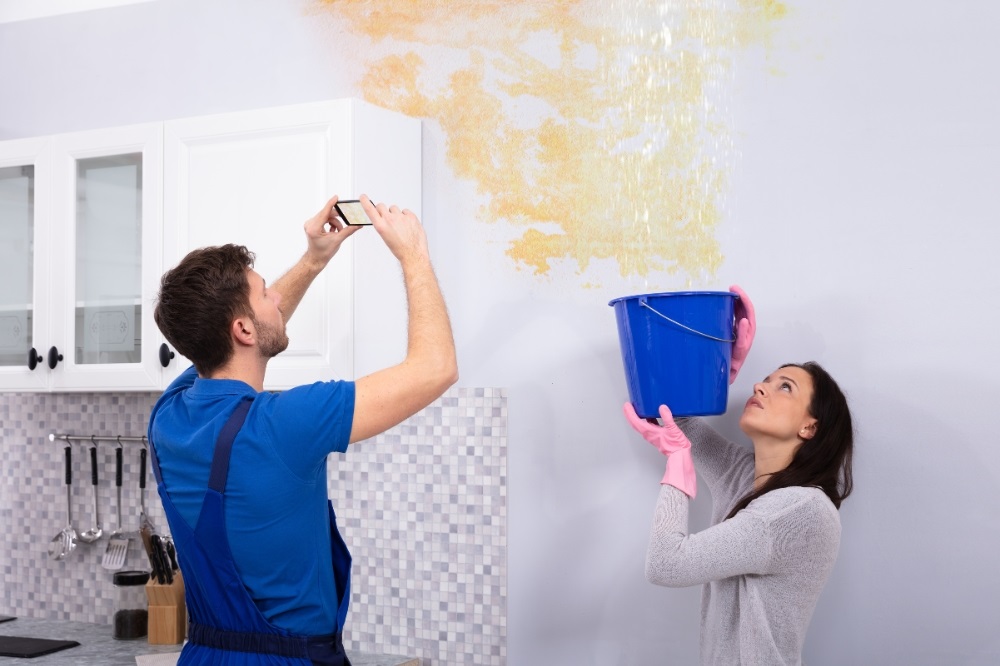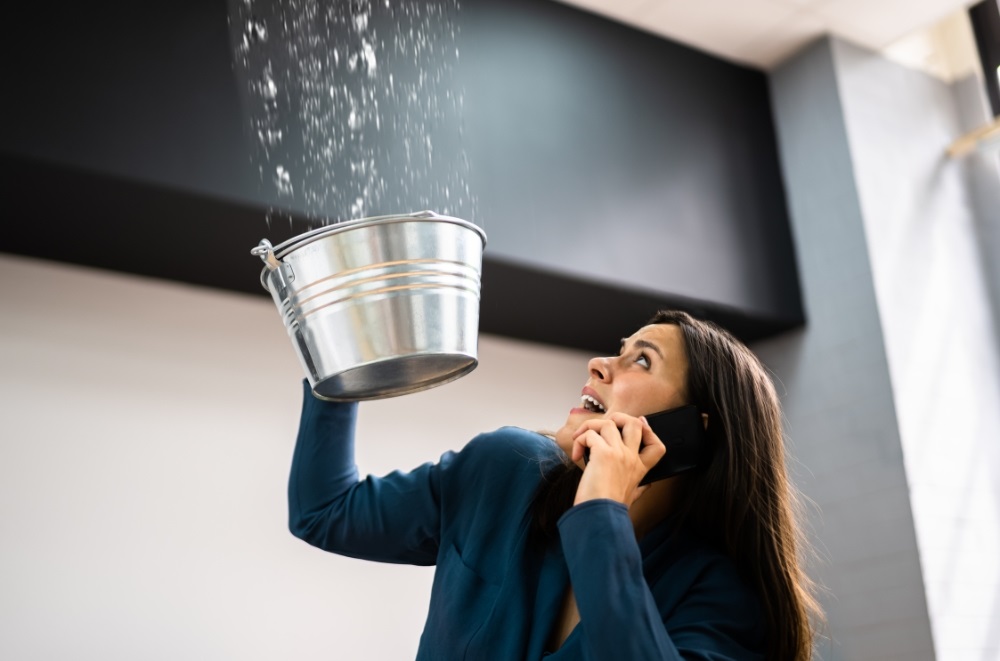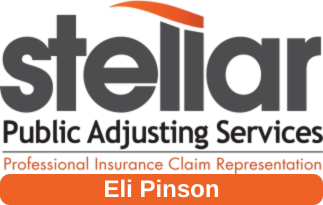The first step in filing a water damage insurance claim involves identifying the source of the leak, as policies may cover sudden and accidental leaks, like those from burst pipes, but not long-term leaks. Early detection through leak detection methods is essential. Additionally, obtaining repair estimates early on can support your claim, ensuring you're adequately compensated for the damage.
It's also crucial to understand the roles of different adjusters in the process. Public adjusters can help you negotiate with your insurance company, offering expertise in handling complex claims. Remember, your state's department of insurance can be a valuable resource if you encounter issues during your claim process. By staying informed and proactive, you can navigate the claim process more smoothly and secure the compensation you deserve.
Getting Started with Your Water Damage Claim
When you discover water damage, the first step is to shut off the water supply to prevent further property damage. Next, initiate a water damage claim with your insurance company immediately. This early action is crucial for a successful claim, as it sets the foundation for the entire process.
Immediate Actions to Take Following Water Damage
Immediately after identifying water damage, locate and turn off the main water supply. This quick action can significantly reduce the extent of the damage, setting a positive tone for the repair and claims process.
Contact Your Insurance Company Promptly
After controlling the water supply, contact your insurance company without delay. Filing a water damage insurance claim promptly is key to a smooth insurance claims process. Quick reporting can also prevent the rejection of your claim due to delayed notification.
Notify Impacted Third Parties If Necessary
If the water damage affects areas beyond your property, like a neighbor's home, inform them immediately. This step is not only courteous but can also be a requirement in some insurance policies. Quick notification helps in coordinating repair efforts and may also be necessary for comprehensive claim documentation.
Documenting the Damage Thoroughly
Begin by taking photos or videos of all affected areas and personal belongings. This visual evidence is crucial for supporting your claim, providing clear documentation of the extent of the water damage.
 #### Capture Photographic Evidence of All Damages
#### Capture Photographic Evidence of All Damages
Use your camera or smartphone to take detailed pictures or videos of all damaged property and belongings. Capture different angles to provide a full scope of the damage. This step is essential for accurately assessing the claim's value.
Keep a Detailed Record of Damage for Your Claim
Maintain a comprehensive list of all damaged items, including their age, purchase price, and estimated cost of replacement or repair. This detailed record will be invaluable when filing your claim and ensuring you receive fair compensation.
Mitigation Measures to Minimize Further Damage
After documenting the damage, take immediate steps to prevent further harm to your property. Insurance adjusters will expect that you've made efforts to mitigate additional damage. This includes removing standing water and protecting undamaged property.
Emergency Repairs: When to Call a Professional Plumber
For emergency repairs, such as fixing burst pipes, contact a professional plumber immediately. Some homeowners insurance policies may cover the cost of these temporary repairs, so keep all receipts and documentation of the work done.
The Importance of Drying and Dehumidifying Affected Areas
Quickly drying out water-affected areas is crucial for preventing mold growth. Use fans, dehumidifiers, and water removal techniques to dry out the premises. This step is essential for maintaining a healthy environment and minimizing additional damage.
Understanding the Insurance Claim Process
The insurance claim process can seem daunting, but understanding your coverage and the steps involved can make it more manageable. This knowledge is key to a successful claim.
Navigating Your Insurance Coverage
It's important to understand your insurance policy's specifics, including what it covers and excludes. Policies typically differentiate between water and fire damage, affecting how claims are handled.
Comprehending Your Policy: Water vs. Fire Damage Coverage
Understanding the difference between water and fire damage coverage in your policy is crucial. Fire damage is typically covered more broadly, while water damage coverage can vary significantly, especially regarding the source of the water damage.
The Role of Loss Adjuster vs. Public Adjuster
A loss adjuster, appointed by your insurance company, assesses the damage to recommend a settlement amount. In contrast, a public adjuster, hired by you, advocates on your behalf to negotiate a fair settlement. Each plays a distinct role in the insurance claims process.
The Claims Adjustment Process
Once a water damage claim is filed, an insurance adjuster will review the case, assess the extent of damage, and estimate the cost of repairs. This process is crucial for determining how much the insurance company will compensate the policyholder. Homeowners should be prepared to provide comprehensive documentation of the damage and may need to make their home available for inspection. It's important for policyholders to understand that additional living expenses might be covered if their home is deemed uninhabitable during repairs.
How to Collaborate Effectively with Your Insurance Company
To ensure a smooth claims process, communication with your insurance company is key. Start by providing all necessary documentation promptly, including photos of the damage and a detailed inventory of affected items. Be transparent and thorough in your communications. If you're unsure about any part of the process, don't hesitate to ask questions. An open line of communication can prevent misunderstandings and expedite your claim. Remember, your insurance company's adjuster is there to assist, but having a clear and detailed account of the damage will facilitate their work and help secure a fair settlement.
The Significance of Not Disposing of Damaged Goods Prematurely
It might be tempting to start cleaning up immediately and dispose of damaged items, but it's crucial to wait until the insurance adjuster has inspected them. Throwing away items too soon can lead to a lack of evidence for your claim, potentially reducing the amount you can recover. Instead, document the damage thoroughly with photos and videos, and set aside damaged goods in a safe area if possible. This approach ensures that you have a strong foundation for your claim, aiding in a more accurate assessment of losses and ultimately helping to maximize your settlement.
Overcoming Common Obstacles
Navigating the path of a water damage insurance claim can feel like steering through a maze. A common hurdle many face is the fine print in their insurance coverage that specifies what types of water damage are covered. Another obstacle is the time it takes for the claim process, which can be frustrating. By understanding your policy thoroughly and maintaining open communication with your insurance, you can smooth out these bumps in the road.
Maximizing Your Insurance Claim
To ensure you receive the maximum benefit from your insurance claim, it's crucial to provide a comprehensive account of the damage. This includes taking detailed photos, keeping all receipts related to repairs, and not discarding any damaged items too soon. Understanding the extent of your insurance coverage and being proactive in the claims process can significantly influence the outcome in your favor.
Hiring Professional Help
Engaging with a professional water damage restoration service can be a game-changer in maximizing your insurance claim. These experts not only bring the know-how in repairing the damage but also in documenting it in a way that aligns with insurance requirements. Their experience can streamline the process, ensuring your property is restored efficiently while helping navigate the complexities of the insurance claim.
Recovery and Restoration
Rebuilding after water damage is a process that demands attention to detail and patience. It's essential to address the source of the damage, whether it be broken pipes or a faulty washing machine, before beginning the drying process. Ensuring a thorough assessment and repair can prevent future issues and aid in the restoration of your property to its pre-damage state.
Steps to Rebuild After Water Damage
The first step in rebuilding after water damage is to address any broken pipes or malfunctioning appliances, such as washing machines, to prevent further damage. Next, the drying process should begin immediately to mitigate mold growth. It's often necessary to remove and replace damaged materials, from drywall to flooring, to ensure a thorough restoration.
Tips for Rebuilding and Healing from Water Damage
Rebuilding after water damage involves more than just physical repairs; it's about healing the space to make it feel like home again. Start by fixing the root cause, such as broken pipes, to prevent future incidents. Embrace the drying process with professional dehumidifiers to protect your home from mold. When reconstructing, consider using water-resistant materials to mitigate the risk of future water damage. Lastly, personalize your space with new decorations or a fresh coat of paint to help move past the damage and make your home feel welcoming once again.
Preparing for the Future
After experiencing water damage, it's crucial to take steps to prevent future incidents. This involves understanding potential risks and implementing measures such as waterproofing and regular maintenance checks. Additionally, reviewing and updating your insurance policy ensures you are adequately covered for any eventuality. By being proactive, you can significantly reduce the likelihood of water damage and ensure a quicker, more efficient response if it does occur.
Conclusion
In summary, navigating a water damage insurance claim requires immediate action, thorough documentation, and a clear understanding of the insurance process. By promptly contacting your insurance company, documenting the damages carefully, and taking necessary mitigation steps, you can enhance the chances of a successful claim. Remember, recovery and restoration are possible with the right approach, and preparing for the future can help minimize risks. With these strategies, securing your claim success becomes a more attainable goal.
Securing Your Claim Success
Securing the success of your insurance claim involves a strategic approach from the outset. It starts with immediate communication with your insurance company and extends to meticulous documentation of damaged materials. Understanding your policy's specifics and cooperating closely with the insurance company’s representatives can make a significant difference. By following these steps diligently, you increase the likelihood of a favorable outcome for your water damage claim.



 #### Capture Photographic Evidence of All Damages
#### Capture Photographic Evidence of All Damages